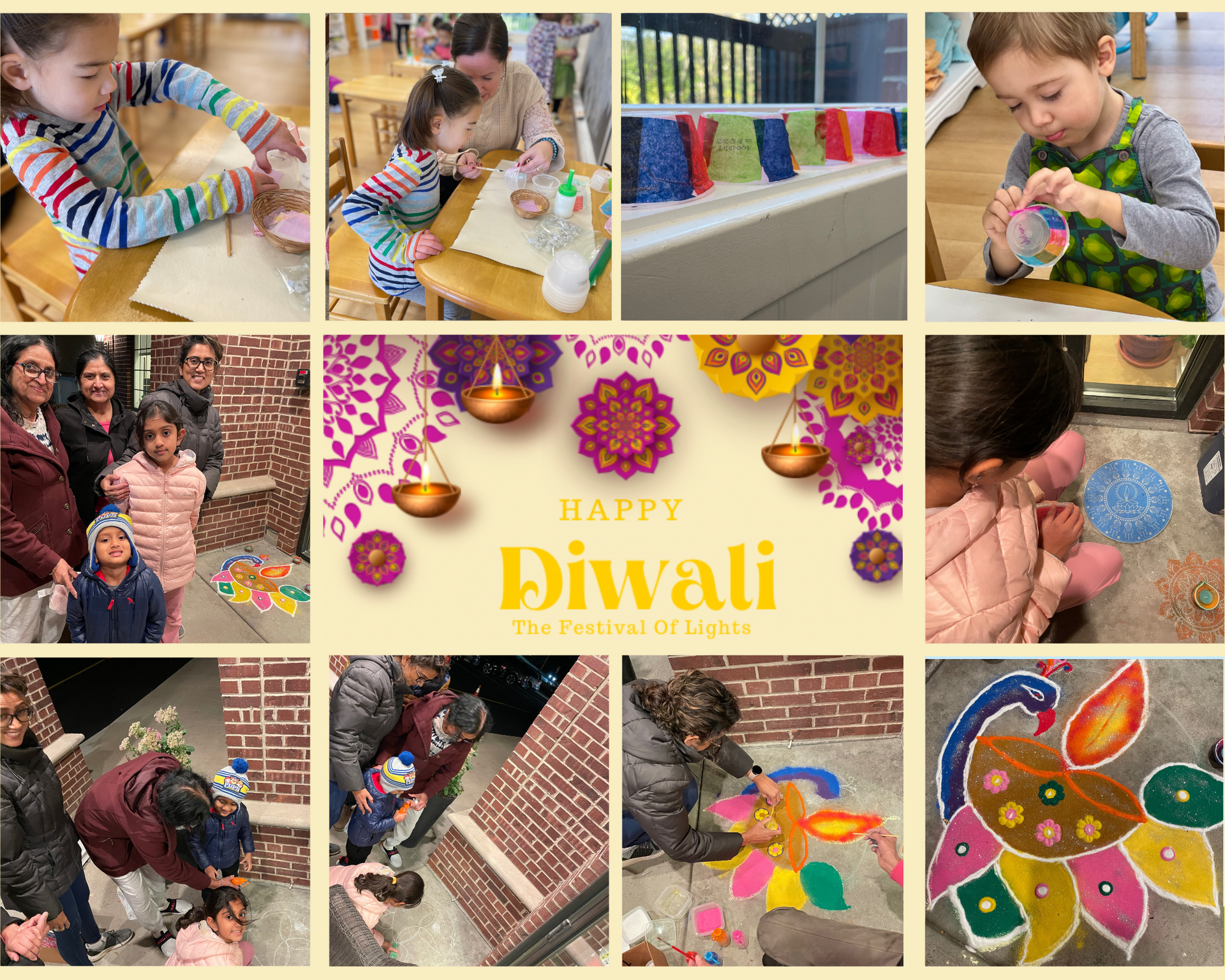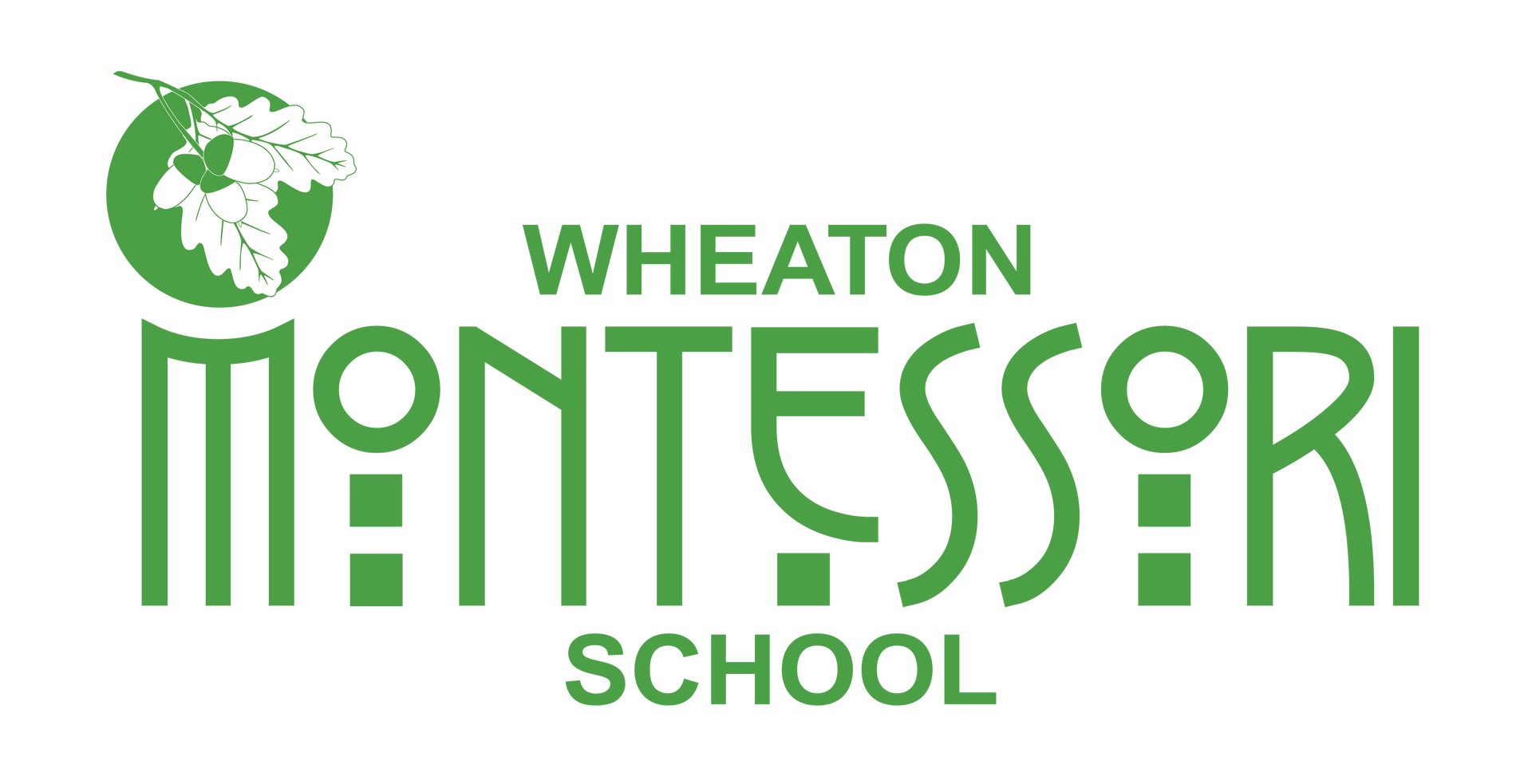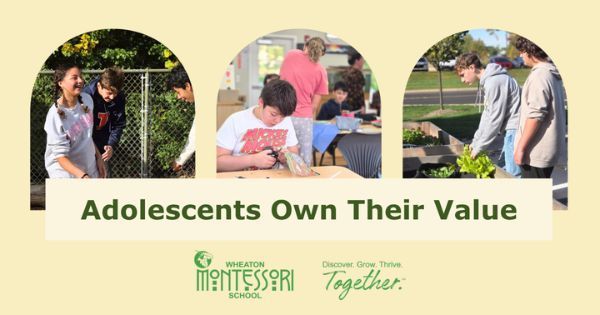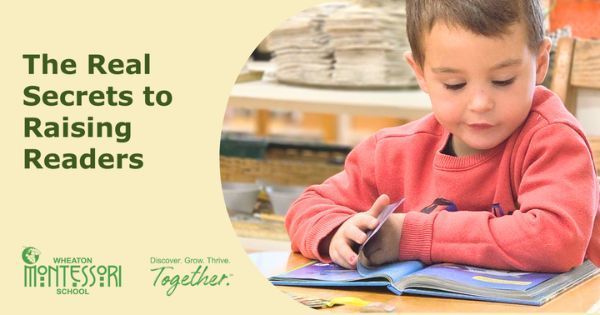
Diwali
Happy Diwali!
Our preschool and kindergarten classrooms are enjoying Diwali celebrations. Wheaton Montessori School began celebrating Diwali a few years after the school was founded in 2000 because of our beloved former teacher Ms. Dipika.* That year, we had sweets, stories, and diyas. This year we have enlisted all of our youngest students to help in the preparations. They each made diyas to bring home. Their handcrafted votive lights will continue to help celebrate the triumph of light over darkness.
Thank you to Anaav Patel’s family (and alumni Aarna) for the beautiful rangoli’s at the main entrance this morning. Your children were adorable enjoying the handwork made of sand. We also learned that the national bird of India is a peacock! What a nice piece of information to add on to our knowledge of India. I searched this website to learn more about peacocks.
Below we share resources to learn more about India's biggest holiday of the year, Diwali, Festival of Lights, which is celebrated across many countries and enjoyed among many religions:
- National Geographic Kids website: A resource for you to be ready to hold a dialogue with your children.
- Gathered arts and craft site: Continue creating decorations at home with this inspiring site.
- Chicago Public Library: Contains list of recommendations to light up your story time! Wheaton Montessori School teachers always rely on books to participate in celebrations. You know how we love to share what is on our bookshelves and we refer to booklists for new favorites.
Celebrating light and goodness reminds me that we are all interconnected. Using symbols of light and greeting each other with wishes for happiness are two ways that we honor our similarities while we respect each other’s differences.
We wish you all a Happy Diwali and may your heart glow as bright as the diya lights of this Diwali.
*Ms. Dipika Lakhani moved back to London to become a Montessori teacher trainer. She was spearheading the Association Montessori International’s humanitarian project “Corner of Hope” as of our last major update.



